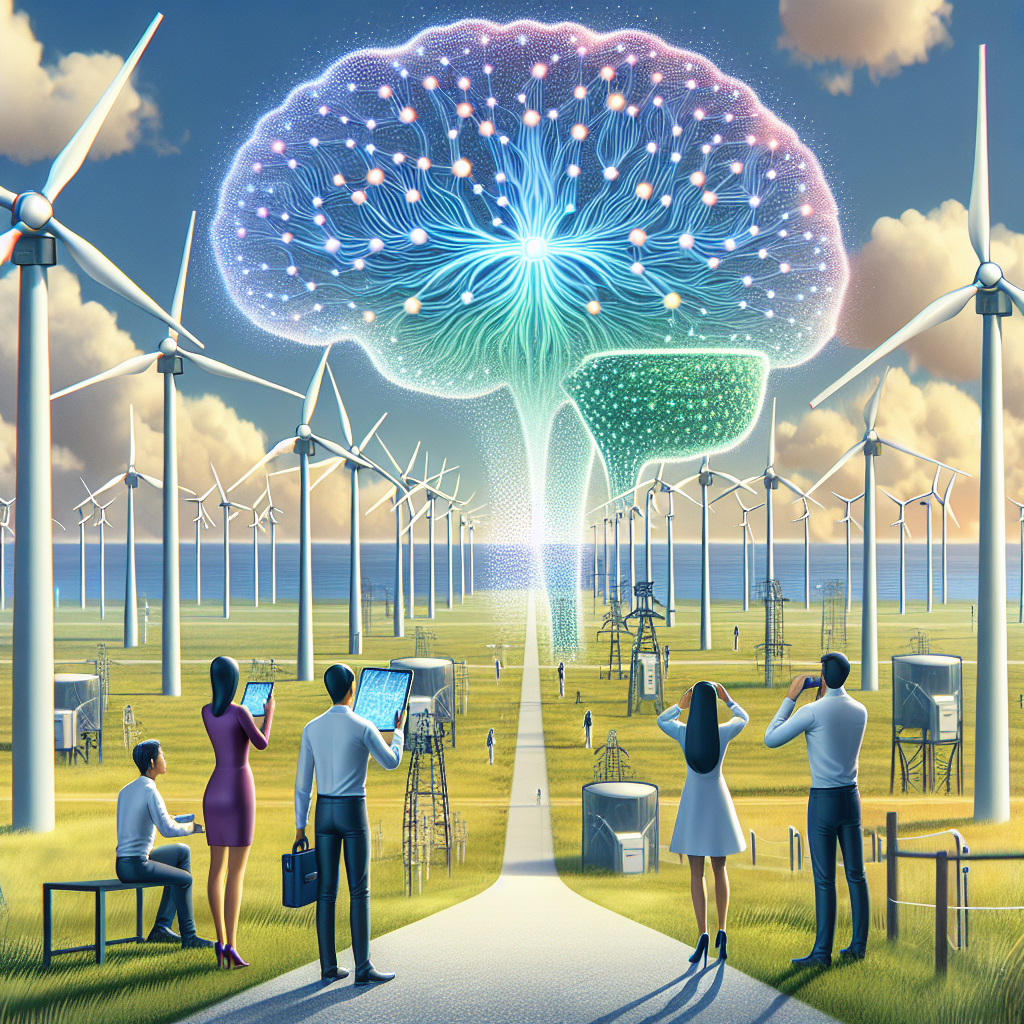Advancements in Renewable Energy with AI Technology
Renewable energy sources such as solar, wind, and hydroelectric power are becoming increasingly important as the world seeks to reduce its dependence on fossil fuels and combat climate change. In recent years, advancements in artificial intelligence (AI) technology have played a crucial role in improving the efficiency and effectiveness of renewable energy systems. By harnessing the power of AI, renewable energy sources can be harnessed more effectively, making them a more viable and reliable alternative to traditional energy sources.
AI technology has been incorporated into renewable energy systems in a variety of ways. One of the most significant applications of AI in renewable energy is in the optimization of energy production. AI algorithms can analyze vast amounts of data in real-time to predict energy demand, optimize energy production, and manage energy storage. This allows renewable energy systems to generate electricity more efficiently, reducing waste and maximizing output.
AI technology is also being used to improve the maintenance and monitoring of renewable energy systems. By analyzing data from sensors and other monitoring devices, AI algorithms can detect potential issues before they become serious problems, allowing for proactive maintenance and reducing downtime. This not only improves the reliability of renewable energy systems but also reduces maintenance costs and extends the lifespan of equipment.
In addition to optimizing energy production and improving maintenance, AI technology is also being used to integrate renewable energy sources into existing power grids more effectively. AI algorithms can predict fluctuations in energy production from sources like solar and wind power, allowing grid operators to adjust power generation and distribution accordingly. This helps to stabilize the grid and prevent blackouts, ensuring a reliable and constant energy supply.
Furthermore, AI technology is being used to improve the efficiency of energy storage systems, which are crucial for storing excess energy generated by renewable sources for use during periods of low production. AI algorithms can optimize the charging and discharging of batteries and other storage devices, ensuring that energy is stored and released at the most efficient times. This helps to reduce waste and maximize the usefulness of renewable energy sources.
Overall, the integration of AI technology into renewable energy systems has the potential to revolutionize the way we generate and use energy. By improving the efficiency, reliability, and effectiveness of renewable energy sources, AI technology is helping to accelerate the transition to a more sustainable and environmentally friendly energy system.
FAQs
Q: How does AI technology improve the efficiency of renewable energy systems?
A: AI technology can analyze vast amounts of data in real-time to predict energy demand, optimize energy production, and manage energy storage. This allows renewable energy systems to generate electricity more efficiently, reducing waste and maximizing output.
Q: How does AI technology improve the maintenance of renewable energy systems?
A: By analyzing data from sensors and other monitoring devices, AI algorithms can detect potential issues before they become serious problems, allowing for proactive maintenance and reducing downtime. This not only improves the reliability of renewable energy systems but also reduces maintenance costs and extends the lifespan of equipment.
Q: How does AI technology help integrate renewable energy sources into existing power grids?
A: AI algorithms can predict fluctuations in energy production from sources like solar and wind power, allowing grid operators to adjust power generation and distribution accordingly. This helps to stabilize the grid and prevent blackouts, ensuring a reliable and constant energy supply.
Q: How does AI technology improve the efficiency of energy storage systems?
A: AI algorithms can optimize the charging and discharging of batteries and other storage devices, ensuring that energy is stored and released at the most efficient times. This helps to reduce waste and maximize the usefulness of renewable energy sources.

